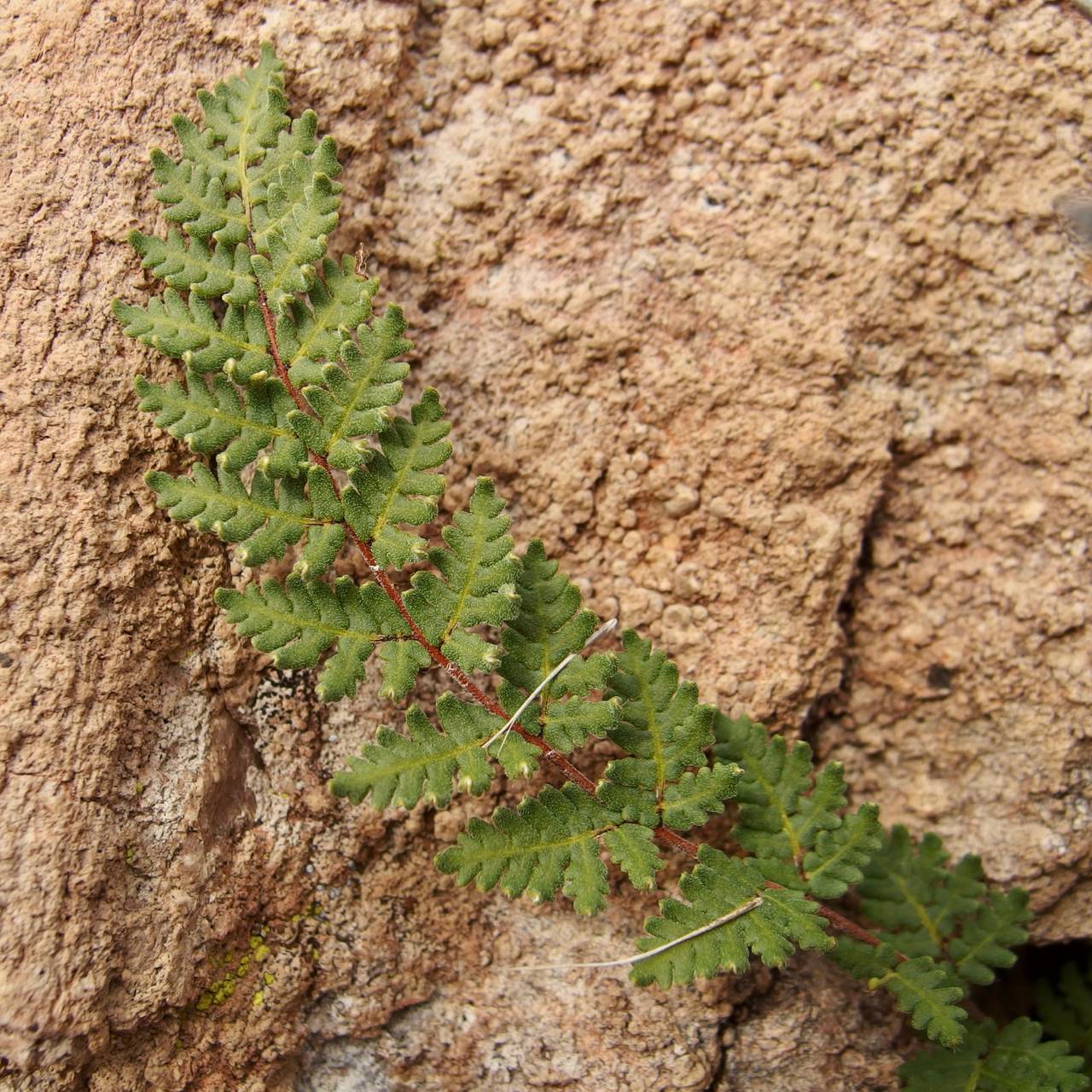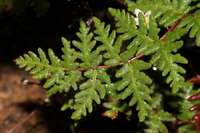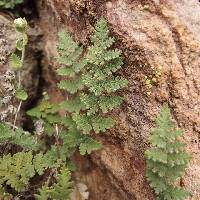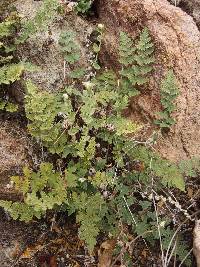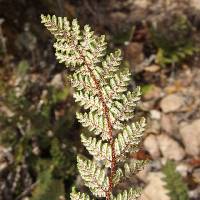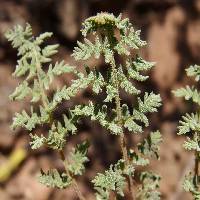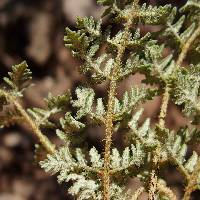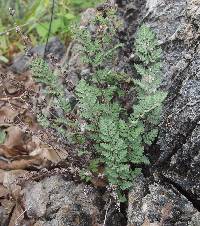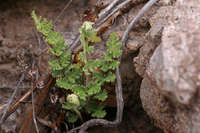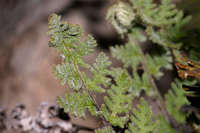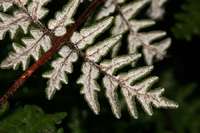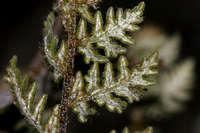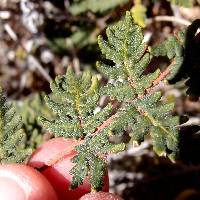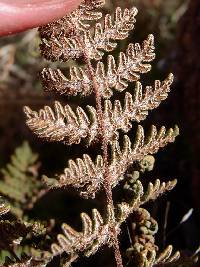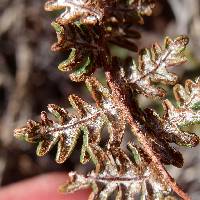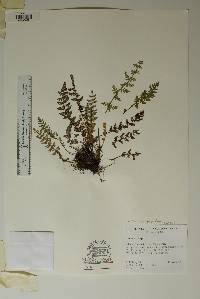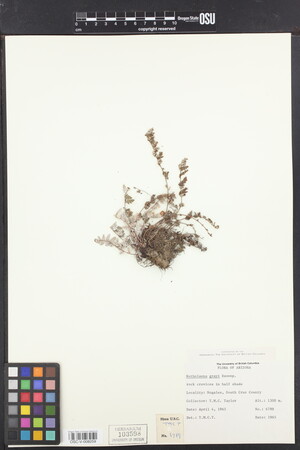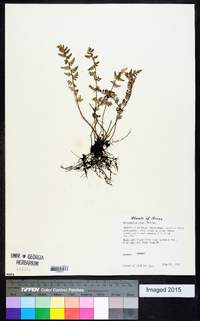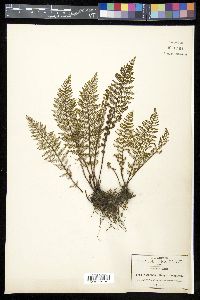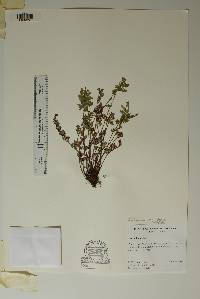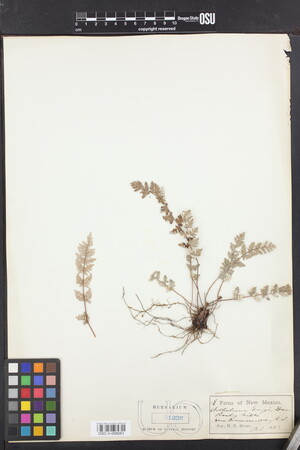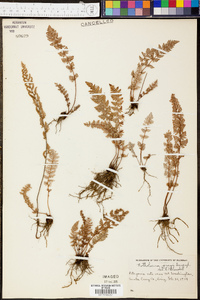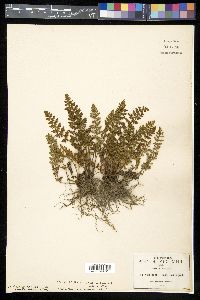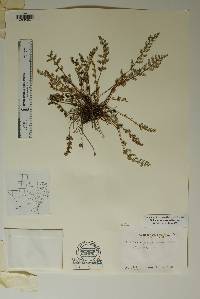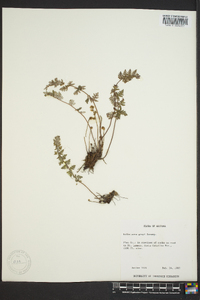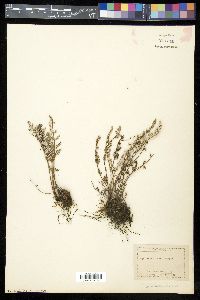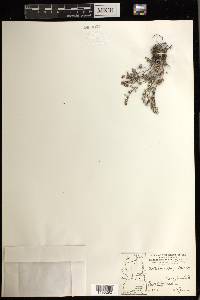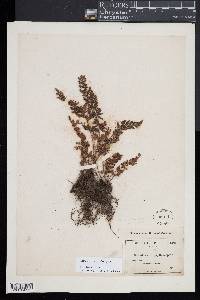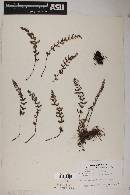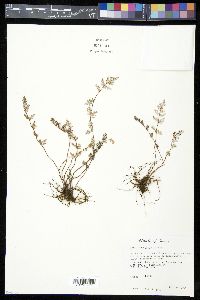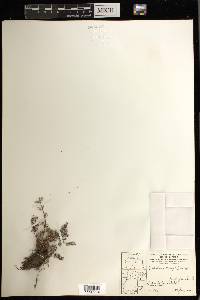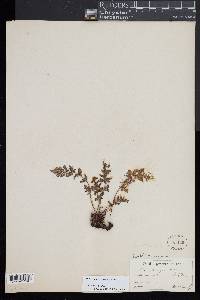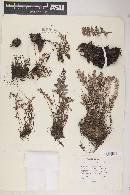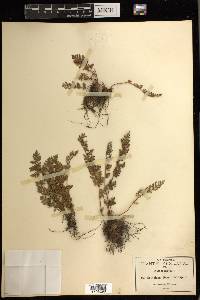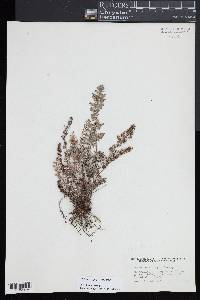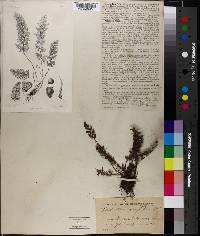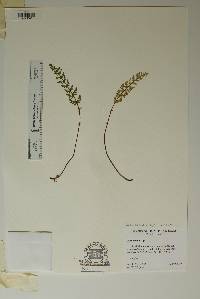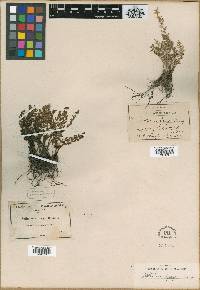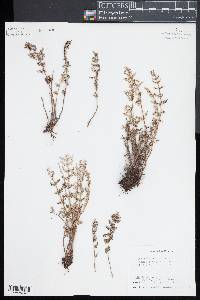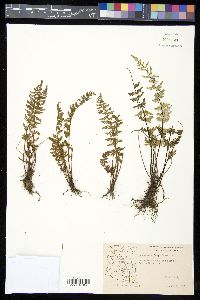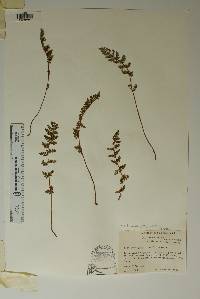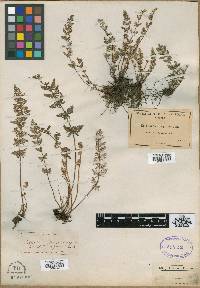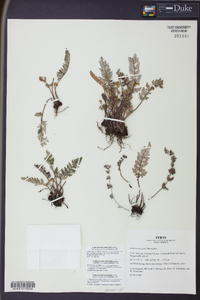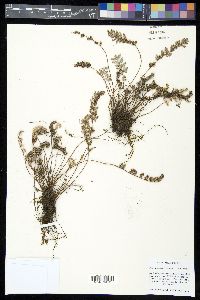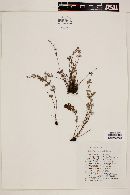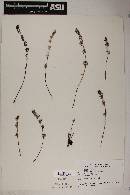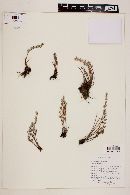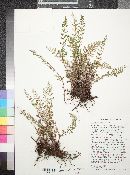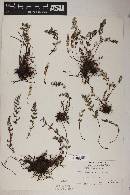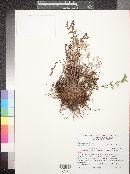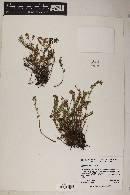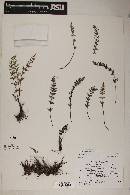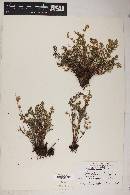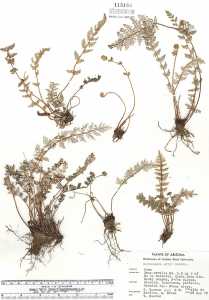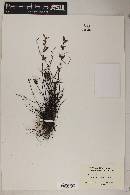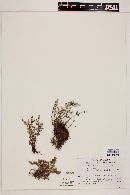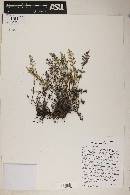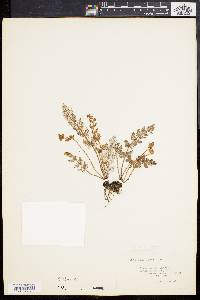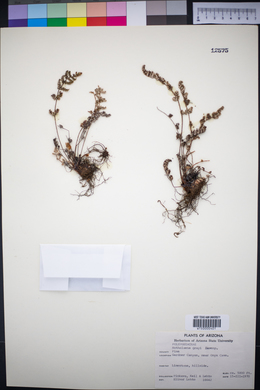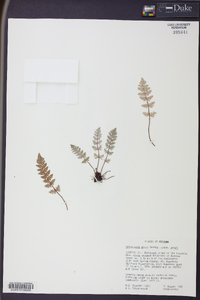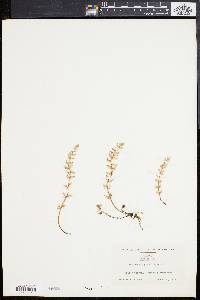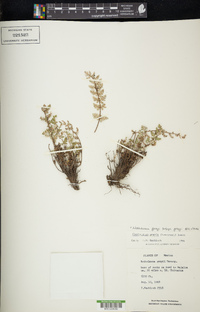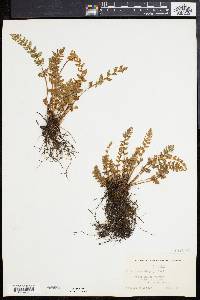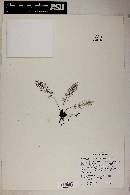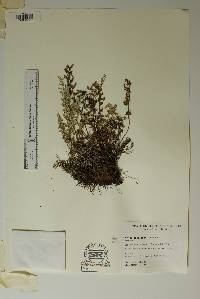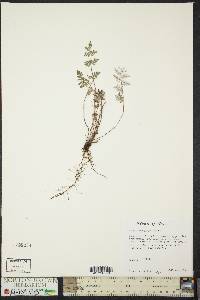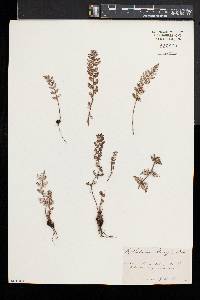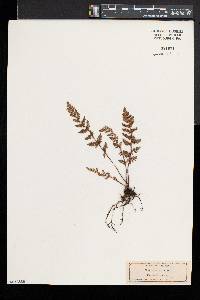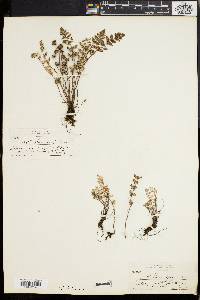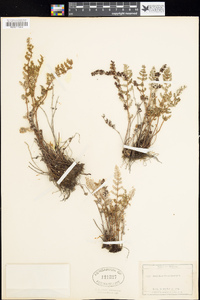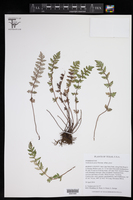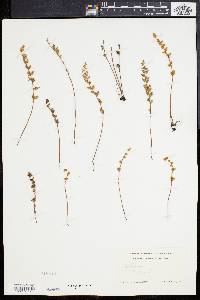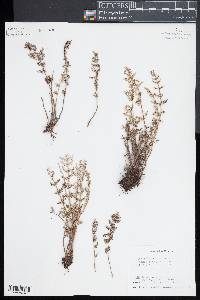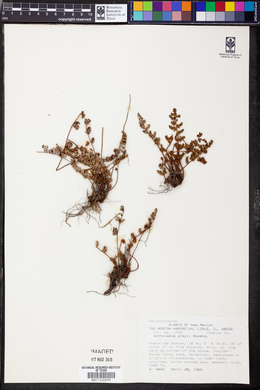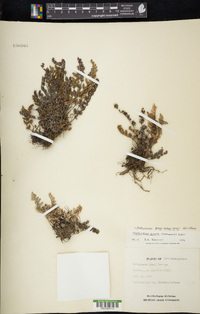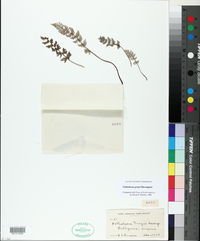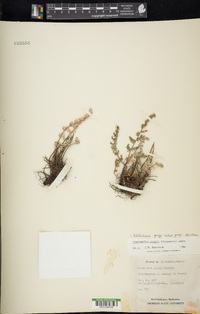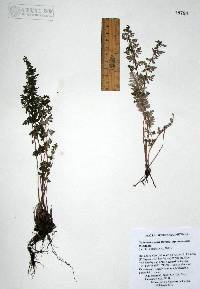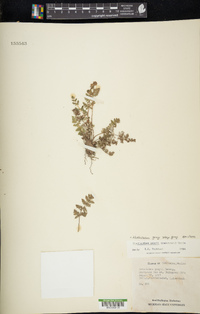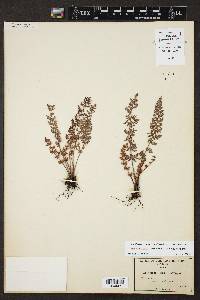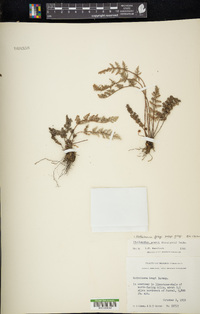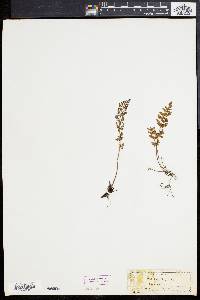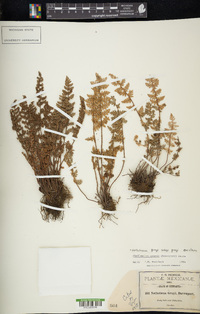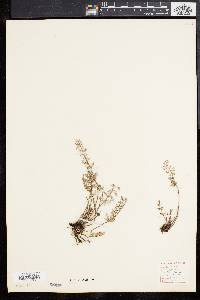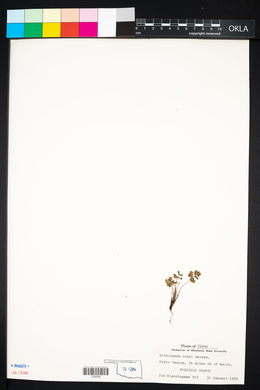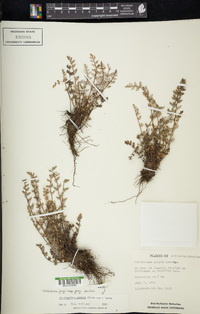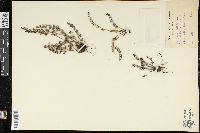Notholaena grayi
|
|
|
|
Family: Pteridaceae
Gray's Cloak Fern
|
Stem scales concolored to weakly bicolored, margins usually brown, very narrow and poorly defined, thin, ciliate-denticulate. Leaves 5--20 cm. Petiole brown, equal to or somewhat shorter than blade, rounded adaxially, glandular-farinose, bearing scattered hairs and scales. Blade linear-lanceolate, 2-pinnate-pinnatifid, 3--6 times longer than wide, abaxially with conspicuous whitish farina and dull, light brown, lanceolate, entire scales scattered along rachises and costae, adaxially distinctly glandular; basal pinnae equal to or slightly larger than adjacent pair, ± equilateral, proximal basiscopic pinnules not greatly enlarged. Ultimate segments sessile, broadly adnate to costae; segment margins slightly recurved, rarely concealing sporangia. Sporangia containing 16 or 32 spores. Notholaena grayi comprises two cytotypes here treated as subspecies. Sexually reproducing diploid populations ( N . grayi subsp. sonorensis ) are concentrated in southern Arizona and western Mexico. Apogamous triploids ( N . grayi subsp. grayi ) are more widespread, extending from Arizona to central Texas and northeastern Mexico. Isozyme analyses indicate that subsp. grayi is an autotriploid derivative of subsp. sonorensis (G. J. Gastony and M. D. Windham 1989).
General: A small fern with leaves 5-20 cm, from stems with concolored or weakly bicolored scales, margins usually brown, and thin, ciliate-denticulate. Leaves: On brown petiole, equal or shorter than blade, rounded above, glandular farinose, with scattered hairs and scales; blade linear-lanceoalte, 2-pinnate, 3-6 times longer than wide, with white farina below and dull, light brown, lanceolate scales scattered along rachises and costae, distinctly glandular above; basal pinnae equal to or slightly larger than adjacent pair; ultimate segments sessile, broadly adnate to costae, segment margins slightly recurved. Sporangia: Sori marginal, partly hidden by the reflexed margins of the segments. Ecology: Found on rocky slopes and cliffs, on a variety of substrates from 1,000-6,500 ft (305-1981 m); sporulates summer-fall. Notes: FNA distinguishes this species into ssp. grayi and ssp. sonorensis, with the difference being 16 spores per sporangia and 32 spores per sporangia, respectively. Better get a collection. Etymology: Notholaena is from the Greek nothos, false, and chlaina, a cloak, a reference to the incomplete indusium, while grayi is named for Asa Gray (1810-1888) the famous American botanist and systematist. Sources: FNA 1993, Dittmer 1993, Kearney and Peebles 1969 FNA 1993, Dittmer 1993, Kearney and Peebles 1969 Common Name: Gray's cloak fern Rarity: G4 General: A small fern with leaves 5-20 cm, from stems with concolored or weakly bicolored scales, margins usually brown, and thin, ciliate-denticulate. Leaves: On brown petiole, equal or shorter than blade, rounded above, glandular farinose, with scattered hairs and scales; blade linear-lanceoalte, 2-pinnate, 3-6 times longer than wide, with white farina below and dull, light brown, lanceolate scales scattered along rachises and costae, distinctly glandular above; basal pinnae equal to or slightly larger than adjacent pair; ultimate segments sessile, broadly adnate to costae, segment margins slightly recurved. Sporangia: Sori marginal, partly hidden by the reflexed margins of the segments. Ecology: Found on rocky slopes and cliffs, on a variety of substrates from 1,000-6,500 ft (305-1981 m); sporulates summer-fall. Notes: Distinguished by having twice-pinnately lobed leaves, the bottom surfaces being covered with conspicuous powder of white grains (farina) and lanceolate brown scales and the upper surface being mostly glabrous except for a few scattered glandular hairs. FNA distinguishes this species into ssp. grayi and ssp. sonorensis, with the difference being 16 spores per sporangia and 32 spores per sporangia, respectively. Better get a collection. Ethnobotany: Unknown Etymology: Notholaena is from the Greek nothos, false, and chlaina, a cloak, a reference to the incomplete indusium, while grayi is named for Asa Gray (1810-1888) the famous American botanist and systematist. Synonyms: None Editor: SBuckley 2010, Francis Coburn 2015 |
|
|
|

